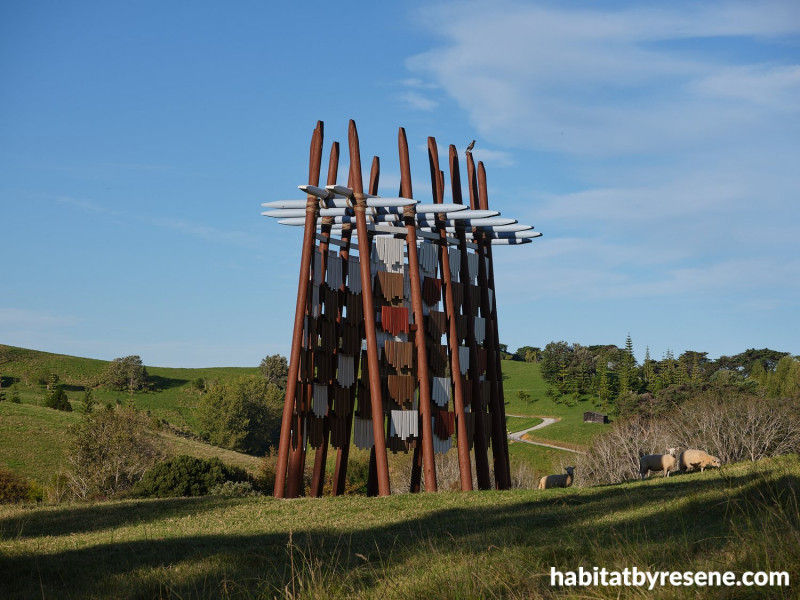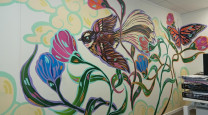
Brick Bay announces 2023 Folly Project winner
10 Jul 2023
The eighth and most recent Brick Bay Folly Project winner has now been officially announced.
Four recent graduates from Victoria University of Wellington School of Architecture have designed and built their winning folly, Te Reo o te Hau (Voice of the Kōkōhau).
From the beginning, Mathew Green, Seth Trocio, Chris Gandhi and William Creighton were united in their clearly defined vision: The wind holds many stories as it sweeps through. It speaks of the health and wellbeing of the people, the moana and the whenua. Without the wind, we would be breathless, birds would not fly, seeds would not spread, oceans would be lifeless and our people would not be prosperous. The wind has a voice, sometimes loud, sometimes subdued. It connects us. It echoes our past, voices our present and opens to our future. This project asks you to listen to the voice of the wind and explore the kōrero it has with the surroundings.
Majestically poised at the entrance to Brick Bay, framing the landscape with an elegant 8-metre high A-frame, this Folly is inspired by Mangatāwhiri - the wind that sweeps across the bay of nearby Omaha. It is a delightful demonstration of innovative architecture used to explore the power of the kōkōhau (wind) and bring its mysterious, invisible character to life.
The concept, deeply informed by mātauranga Māori, involved close consultation with, and guidance by, local iwi Ngāti Manuhiri ensuring that the application of the subject matter into architecture was communicated correctly and respectfully. This resulted in the team being gifted a pūrākau (mythological narrative), which informed the visual patterning on the folly.
Voice of the Kōkōhau uses layers of timber shingles, strung in a way to allow precisely the right amount of movement to enable a subtle kinetic effect and, as a result, create a soft clatter of timber, like that of an earthly wind-chime.
The ordered assemblage of layered shingles is designed with a multi-coloured palette of Resene paints and stains. In this way, the Folly takes on multiple meanings; not only is it the expression of the wind’s force and activation of the wind’s voice, but each of the shingles inherits the role of a feather. Collectively, the impression of a kākahu (cloak) is created, appearing to drape over the structure, which grounds the structure within the whenua.
The Folly has a deeply interactive quality about it - not only in the curiosity and delight it creates through movement and sound, but in the way it encases those who visit it, encouraging them to walk through it, to be sheltered and feel connected to the elements.

The team behind Te Reo o te Hau (Voice of the Kōkōhau), Mathew Green, Seth Trocio, Chris Gandhi and William Creighton. Made from Pinus radiata, recycled kwila, stained sisal rope, stainless steel wire and fittings, the folly is finished in Resene Waterborne Woodsman in Resene Dark Oak on the vertical poles, Resene Lumbersider Low Sheen in Resene Rock Blue and Resene Porcelain on cross members, Resene Woodsman Waterborne in Resene Whero, Resene Nutmeg, Resene Driftwood, Resene Pickled Bean and Resene Lumbersider Low Sheen in Resene Porcelain on shingles.
William Creighton explains: “As you enter, it’s like a cloak of manaaki. It’s ephemeral but also grounded in the cultural narrative of the site. Nearby Te Hauturu-o-Toi (Little Barrier) is the final resting place of the God of Wind and a cloud rests over it, almost like a crown.”
With Seth, Chris and William based in Wellington, and Mathew in Christchurch, and all of them employed full-time in professional practice, the success of the project required an impressive amount of forward planning and teamwork. The mentors encouraged the team to push their design taller and wider, resulting in the number of shingles needed almost doubling. There was a strong desire to use recycled timber where possible, therefore the kwila for the shingles was sourced and collected from numerous building sites, and (in a testing labour of love), cut, de-nailed, cut, sanded, stained and painted. As Mathew Green recalls, “The best part of that was the timber had its own history. All the variations and the different ages show through when you’re standing up close to the folly – it’s gone through a lot of hands and that’s what makes it so cool.”
Numerous prototypes were built and tested, both for quality of movement and sound, with the gradual finessing of dwangs and tension wires. Patterns for the lashings were perfected, with half a kilometre of sisal rope dyed and prepared for use. The large vertical members came from the Waikato and were chain sawed by an arborist to prepare them to go in-ground, while the kwila travelled from Christchurch, to Wellington, to Auckland, eventually arriving at Brick Bay, ready for assembly. During the course of the project, the team members collaborated throughout the country, with numerous trips made to Brick Bay for site planning, foundations, and the final build, which took over two weeks. As Architecture NZ’s Amanda Harkness outlines: “There is some irony in the fact that Cyclone Gabrielle, one of the worst weather events to hit the country in the last century, struck as the team was installing Te reo o te Hau. But the members are quick to point out that the challenges posed by the extreme weather brought them closer as a team, strengthening their resolve, and their understanding and appreciation of one another’s talents.”
As a result of months of attentive care and hard work, the team has created a significant structure, with commanding aesthetic impact and the communication of a gentle, ethereality. Leading architect and chair of the Brick Bay Folly competition Pip Cheshire notes:
“The folly project challenges teams to take their glossy competition renders and work through the big issues of supply, structural integrity, and cost control: a process that invariably ends in the minutiae of counting screws and metres of rope before the graft of fabrication and assembly. All of that can amount to little unless the end result stirs our imagination. This year’s folly has a strong idea founded on the cultural history of the site, a complex logistical exercise involving a team strung out over the lower half of the country and a do-or-die goal of harnessing the wind. We mentors were worried about the detail that would allow the timber ‘feathers’ to move and clatter in the wind; that the team has achieved this and brought the folly to life is a testimony to their creativity, persistence and hard work. It is a fine piece.”
Te Reo o te Hau: Voice of the Kokohau is now open to the public where visitors can view and interact with this powerful piece of architecture. You can also read the full article by Amanda Harkness published on Architecture NOW here.
Read more about Te Reo o te Hau: Voice of the Kokohau and the top five entries: www.brickbaysculpture.co.nz/folly-2023
Published: 10 Jul 2023






